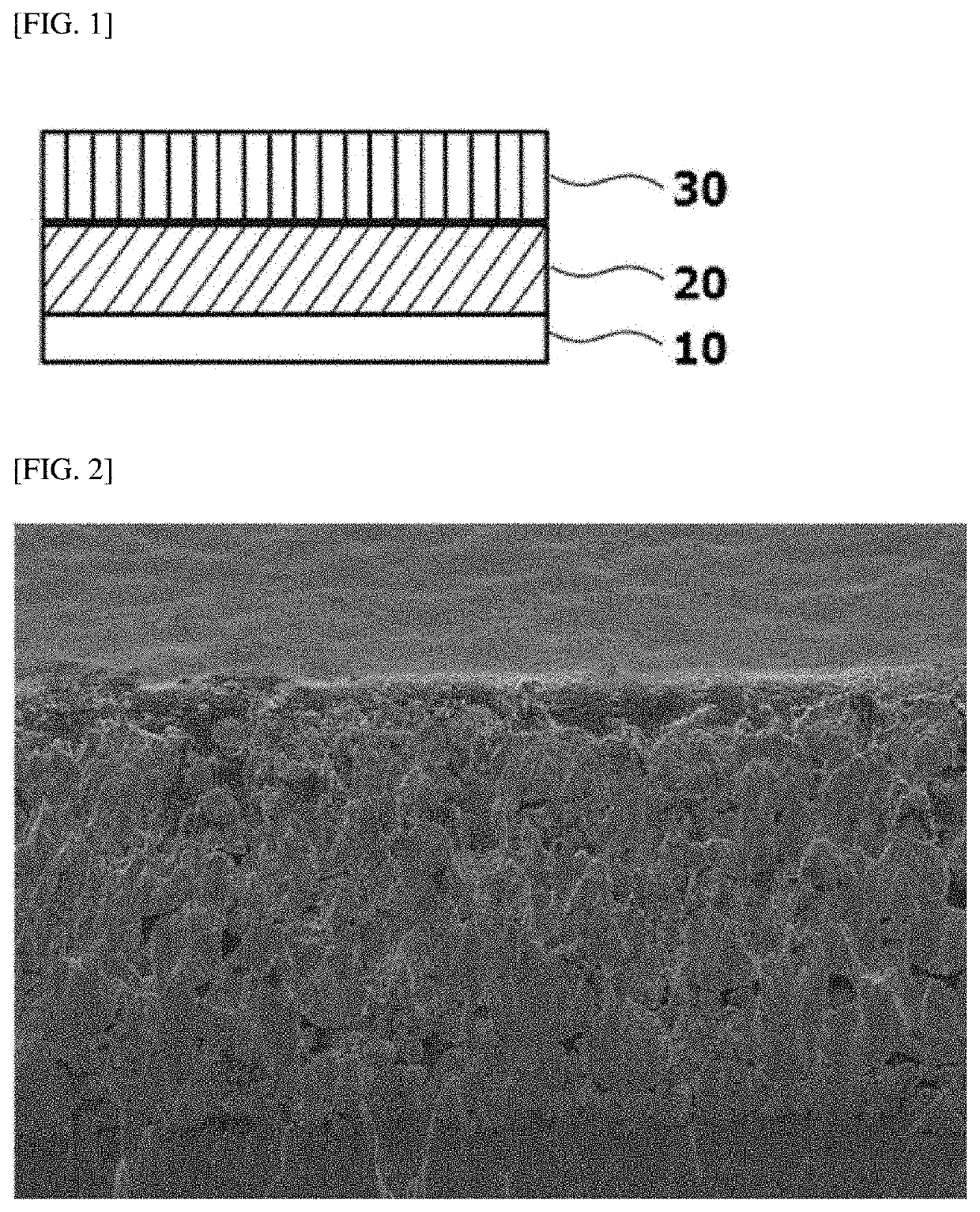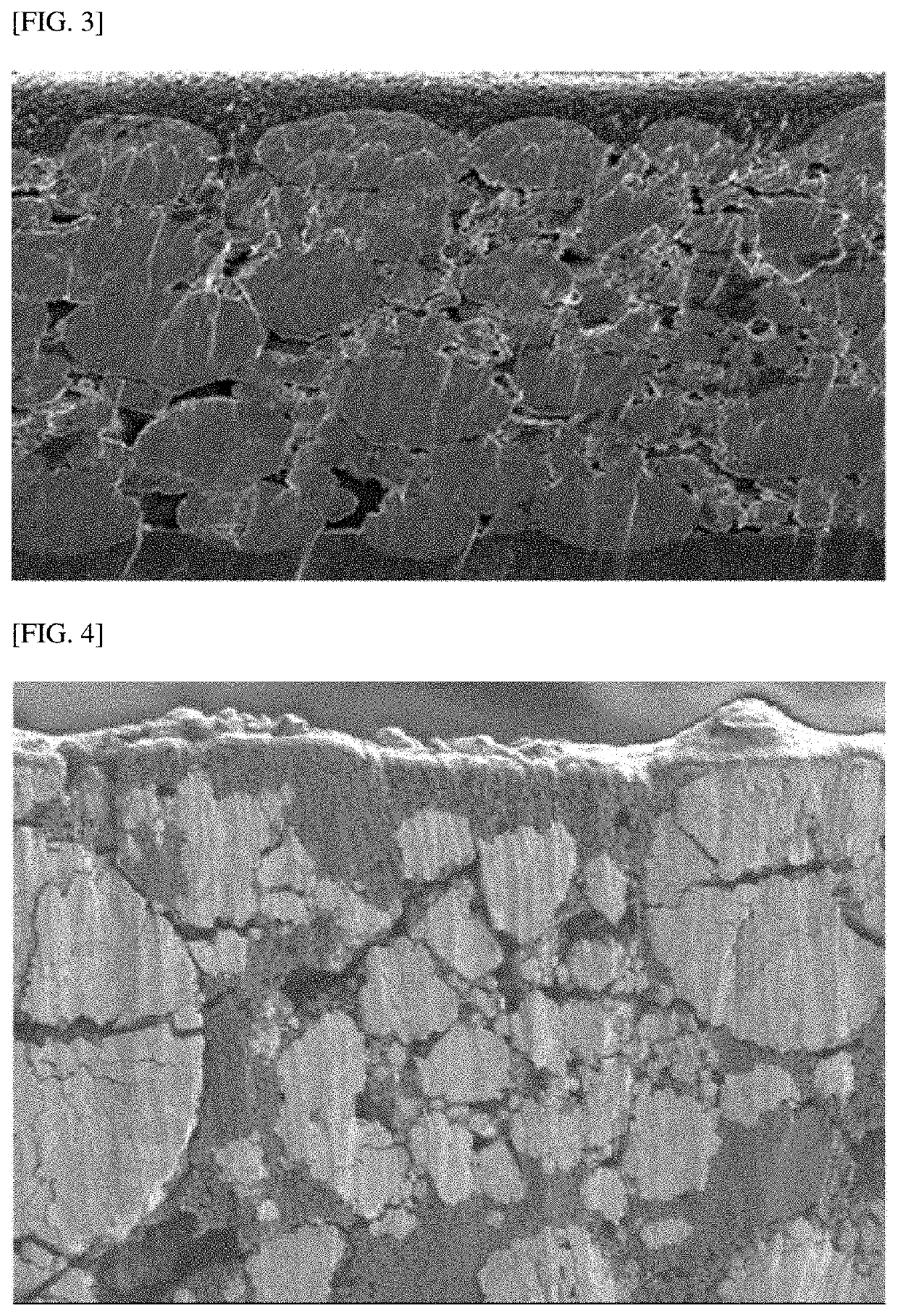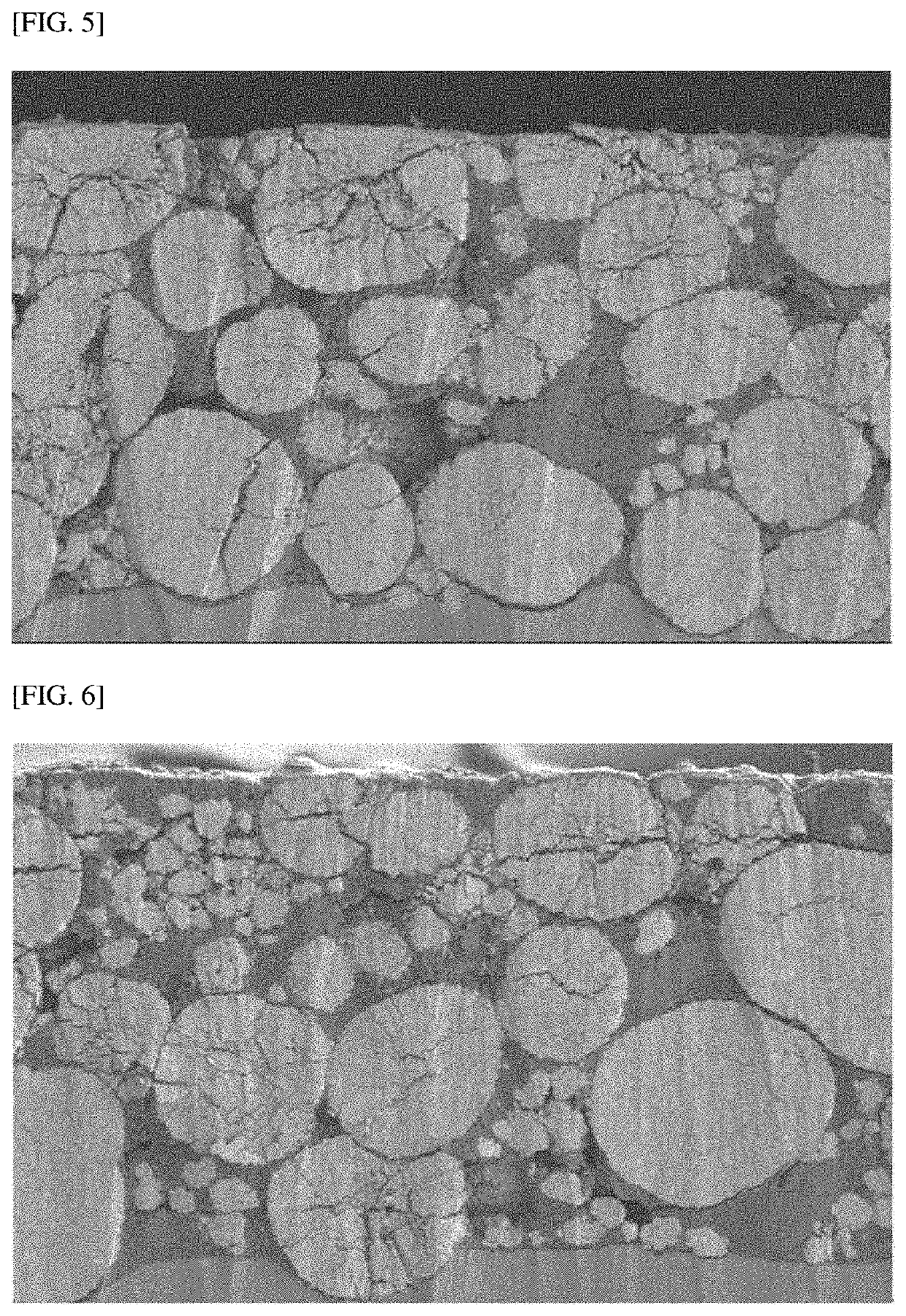Positive Electrode for Lithium Secondary Battery and Lithium Secondary Battery Including the Same
a lithium secondary battery and lithium secondary battery technology, applied in the direction of positive electrodes, active material electrodes, material nanotechnology, etc., can solve the problems of inferior thermal stability, limited mass use as a power source, and poor thermal properties of liniosub>2 /sub>, so as to improve the conductivity of a positive electrode, improve the energy density, and improve the effect of the energy density
- Summary
- Abstract
- Description
- Claims
- Application Information
AI Technical Summary
Benefits of technology
Problems solved by technology
Method used
Image
Examples
example 1
[0098]Li1.02Ni0.8Co0.1Mn0.1O2 having an average particle diameter (D50) of 15 μm as a first positive electrode active material and Li1.04Ni0.8Co0.1Mn0.1O2 having an average particle diameter (D50) of 6 μm as a second positive electrode active material were mixed in a weight ratio of 80:20, and the resulting mixture was used as a positive electrode material.
[0099]The mixed positive electrode material, Denka black as a conductive material, and polyvinylidene fluoride (PVDF, KF1100) as a binder were mixed in a weight ratio of 96.5:1.5:2, and the resulting mixture was added to an N-methyl pyrrolidone (NMP) solvent to prepare a composition for forming a positive electrode. The composition for forming a positive electrode was applied onto a 20 μm-thick aluminum (Al) foil, dried, and then roll-pressed to form a positive electrode active material layer having a thickness of 60 μm on the surface of the positive electrode current collector (Al foil).
[0100]Meanwhile, sphere-type carbon black h...
example 2
[0101]A positive electrode was manufactured in the same manner as in Example 1 except that a 10 μm-thick carbon-based coating layer was formed on the surface of a positive electrode active material layer by controlling the application amount of a composition for forming a coating layer.
example 3
[0102]A positive electrode was manufactured in the same manner as in Example 1 except that a 1 μm-thick carbon-based coating layer was formed on the surface of a positive electrode active material layer by controlling the application amount of a composition for forming a coating layer.
PUM
| Property | Measurement | Unit |
|---|---|---|
| thickness | aaaaa | aaaaa |
| specific surface area | aaaaa | aaaaa |
| density | aaaaa | aaaaa |
Abstract
Description
Claims
Application Information
 Login to View More
Login to View More - R&D
- Intellectual Property
- Life Sciences
- Materials
- Tech Scout
- Unparalleled Data Quality
- Higher Quality Content
- 60% Fewer Hallucinations
Browse by: Latest US Patents, China's latest patents, Technical Efficacy Thesaurus, Application Domain, Technology Topic, Popular Technical Reports.
© 2025 PatSnap. All rights reserved.Legal|Privacy policy|Modern Slavery Act Transparency Statement|Sitemap|About US| Contact US: help@patsnap.com



